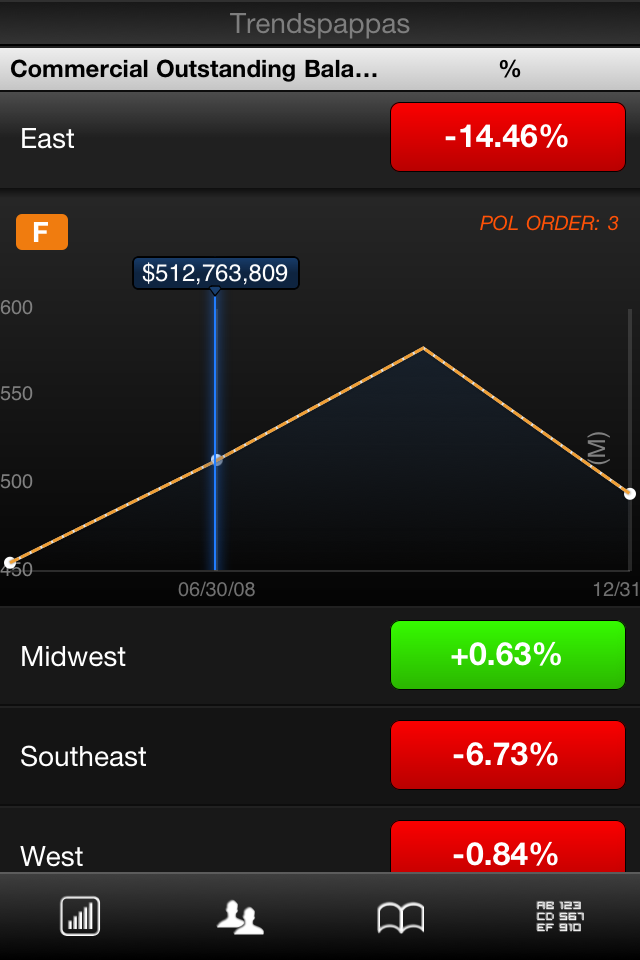Despite the maturity of business intelligence solutions, adoption rates continue to underwhelm. Roughly one quarter of potential employees use BI in corporations who have deployed it. However, a convergence of market trends is poised to drive greater adoption:
- Mobile BI
- Collaboration
- Interactive data visualizations
- Search
Let’s explore how each aspect promotes BI adoption and how, collectively, they can boost return on BI investment. In this two-part series, I will illustrate each with examples using RoambiTM ES from MeLLmo®, rated by Fortune magazine as one of the best apps for business.
Mobile BI
Mobile BI has been discussed theoretically for years, and some reports and progress indicators have been delivered to very small screens. But as static material, those reports were little more than tiny snapshot emails. The larger screen size and engaging visuals on tablet computers and some smart phones have made mobile BI a reality. Ever-online execs and line-of-business managers can keep track of near real-time data, spot emerging trends in their business data, and receive actionable alerts.
One classic implementation is to deploy BI dashboards to mobile. Consider a corporate banking risk manager, Jill, who is computing by rail into the office. With a mobile dashboard, she can access the latest data, identify trends needing attending, and drill into details. In the example in Figure 1, Jill has identified that commercial outstanding balances are have increased over 14 percent in the Eastern region, significantly higher than other regions.

At this point, Jill may need additional information – are particular commercial customers driving this? Is this spike creating higher risk than policy prescribes, on balance with other lines of business? She may now need to share what she’s spotted with others to decide next steps.
Collaborative Decision Support
Jill realizes she needs additional information from other colleagues. From this Roambi Trends view on her iPhone, she can easily share the view and invite her colleagues to comment. By clicking on the heads icon, from the collaboration panel, Jill can send a text message to a co-worker who also subscribes to this data. She can also send an email containing a link to the view, adding her comments, as show in Figure 2.

Business Intelligence advocates have long touted its value proposition in terms of decision support, promoting one version of the truth, and increasing speed to insight. Delivering BI via mobile, and coupling that with collaboration, helps deliver on that proposition. With its ease-of-use and simple deployment, Roambi for SAS helps business users get discrete, actionable data into decision makers’ hands, wherever and whenever they need it.
In the second and last piece of this series, I will explore how interactions with data on mobile devices can entice users, further helping to drive adoption and user delight.

4 Comments
Pingback: Boost BI adoption rates with mobile delivery and collaboration - SAS Voices
Lisa, I do think mobile has the potential to increase BI adoption. IMHO, there’s ultimately only one way to judge the value of a business intelligence solution. That is, does the solution provide business managers with the information they need in the timeframe they require to influence decisions? Everything else is really secondary. Consequently, one of the key measures that we use at Aberdeen to gauge the effectiveness of an organization's BI strategy is the ability of business managers to find the information they need. We measure this by asking how often managers are able to find the information they need within the timeframe they require in order to drive their decisions. After all, perfect information delivered too late to influence a decision is worthless.
Breaking it down, there are two dimensions to timeliness – access to information and completeness of information. As you point out, mobility can certainly help provide more timely access to the information that exists in a data warehouse or operational data store. If a manager has access to the information they need anywhere at any time, clearly that can help reduce their time to decision. The other aspect, completeness of information, may be the one that is harder to address because throwing technology at it doesn’t really help. In my agile BI research from March this year I found that companies were often still lacking in basic steps such as requirements gathering and post-project review. For example, while 72% of Best-in-Class organizations (i.e. those with the most agile BI implementations) have a process for collecting and formulating BI requirements, only 43% of their peers did. Likewise, nearly twice as many top performers had a post project review process compared to other firms. So it seems that ensuring access to the right set of information is more a failing of process than anything else at the moment.
David,
I couldn't agree more. I've been studying for the project management professional certification (PMP), and some of your points coincide directly with project management best practice as well. Get the requirements right -- what do the stakeholders want and expect -- then baseline and measure against that. Too often, we "throw technology" at an information problem then are surprised when it's not a solution. It's one of the great benefits of agile methodology that because you iterate, you not only clarify requirements but--based on success achieved--you find additional or more effective business objectives. And the value of the post-project review cannot be overstated. Lessons learned are the history from which we much learn, else we repeat mistakes. Thanks for your comments!
Pingback: Mobile Options for All SAS Programs